|
I had the pleasure of getting to know artist Jennifer McNichols online when we were both included in an exhibition called Mothers at the Woman Made Gallery in Chicago. Part of her series titled "Let Them Eat Cake" was included in the exhibition, and I had the pleasure of seeing it in person. The series was inspired by her experiences with cesarean section birth and the emotional turmoil which followed. Jennifer uses cake- a very traditional domestic item- to explore the complicated feelings which arose from her c-section. Self- Preservation 2008- 2010 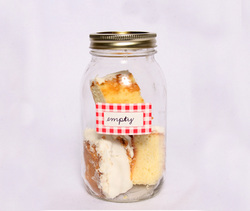 The work which I saw in person at the show in Chicago was called "Self- Preservation." It is a series of four mason jars with slices of white cake in each one. The jars are each labeled with different words- "Betrayed, Failure, Empty, Powerless." The delivery of the message is interesting. Canning and preserving are a typically female occupation, and a very traditional one. There's something banal and simple about canned items which contrasts powerfully with the messages. The use of jars also suggests that these feelings are literally bottled up. Carved 2008-2010 Several of her pieces employ the use of whole cakes as a metaphor for the human body. Carved and Breached are two photographs which depict a cake which is carved or sectioned to mimic the actions on the human body in cesarean section. There's a visceral quality to these works- the fondant icing mimics skin and there is a vulnerable quality to these cakes which cause one to almost identify with them as persons. It's hard not to wince when looking at them, especially if you've experienced a c- section yourself. Breached 2008- 2010 Mourned 2008- 2010 "From 2008 through 2010 I created and photographed a series of handmade and hand-decorated cakes and accompanying installation pieces exploring the feelings experienced by many women who suffer for the convenience of others through unnecessary and unplanned surgical childbirth. In so doing I hope to give form to the emotional landscape inhabited by many such women in solitude and silence while those around them celebrate, and to help those who have difficulty relating to post-Cesarean mothers explore the emotions felt by women they know and love. The cakes, and the photographs of them, are intended to draw on a variety of touchpoints. There are their specific references, of course, to the restraints, drugs, and psychological aftereffects of unwanted Cesareans, but the medium is also the message. The white-fondant-covered cakes partake of both the white-tablecloth celebration and the funeral, highlighting the distance that can divide those with direct experience of trauma from the world around them despite what appear to be shared rituals. Their smooth surface but imperfect contours are suggestive of the vulnerable and naked human body, and their ghostly pallor hints at the inner corpus exposed under harsh lights in surgery. In the act of baking and decorating the cakes, I made and remade that captive flesh, building it up and staring it down through the lens of my camera." -Jennifer McNichols Cold Comfort 2008- 2010
0 Comments
This week I'm just writing a quick little feature on some lovely baby items. If you're looking for Christmas gifts for a baby, look no further than Bonnie Baby. It's an etsy site of hand made items by Bonnie Lynn Polnaszek. Why shop at big box stores when you can buy at the source?
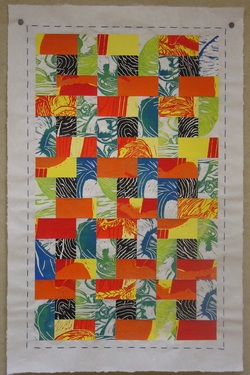 Rachel Epp Buller is a feminist art historian, a print maker and a mother of three. Her series "The Identity Series" are a beautiful, intricate series of prints based on the motif of a fingerprint. Fingerprints figure very largely in the life of a mother- finger prints on the walls, on the windows and on mirrors become a part of our visual landscape. If you were to look at our bodies with forensic dust under black light we would probably be covered with the imprints of our children. I read somewhere that a small amount of our children's cells remain with us long after they're born and have grown. We're forever imprinted. This series calls to light the identity of a mother as it's combined with and altered by the personalities of her children. It's a complex portrait of what it means to be a mother- the occasional loss of self, but the gain of a bright new and complex self in relation to our children. Twist, in 3 Parts, 2009 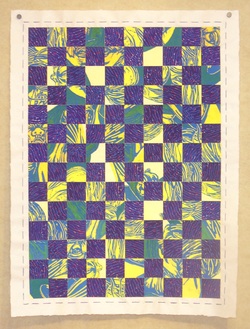 "The Identity Series marks the changes, overlaps, and transformations of identity that occur in the life of the family. Initially conceived as a grouping of representational portraits, the series later morphed into an abstracted idea of portraiture, taking as its formal basis one fingerprint of each member of our family. Printed individually, the fingerprints highlight unique genetic qualities; when layered, they can speak to the temporary masking of identity that occurs in the position of motherhood. In hand-stitched print blankets, issues of genetic difference overlap, literally and metaphorically, with larger implications of family position—individuality alongside and within familial identity. The most recent print “quilts” combine the fingerprints with fragments of the representational portraits, further playing on issues of identity and likeness. These visual memoirs of motherhood use traditional patchwork quilting patterns to draw on a lengthy history of women’s artistic creativity and on my own Mennonite cultural heritage." -Rachel Epp Buller Youngest Four- Patch, 2009 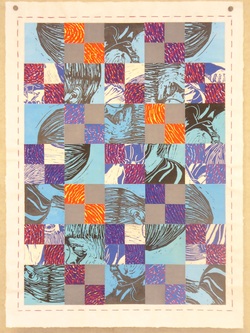 Buller references her own Mennonite background by using familiar quilt patterns to combine the elements of finger prints and portraits. The quilt aesthetic draws us in to the comfort of the familiar, and makes reference to family and home. Within the pattern we also see objects, outlines and forms- portraits of individuals mixed together. I feel that the fingerprint outlines make some allusion to science and DNA while the quilt pattern speaks more of tradition. I love the idea of a portrait combining different elements of one's family. I feel it's true that we are all a pattern involving those who matter to us, and who influence our lives. Firstborn Shirting Quilt, 2009
Honestly. Roller derby, motherhood, feminism... how could you possibly go wrong? I saw Kate Wilhelm's portfolio and I was instantly drawn to it. Obviously the photographs attract me partly because they reflect my own life and my own interests. Each photograph depicts a woman decked in derby gear but set in her own home environment. Baroness Von Spike I love the contrast of the derby women with their domestic scenes. I love the juxtapostion of the derby gear with the softer qualities of home life. I think these are actually a fascinating exploration of women- the complexity of what makes us female. The most classic is the one below, which mimics the classic Madonna and Child theme but with derby gear and skates. I love the contrast of hard and soft- the hard gear with soft breasts and soft babies. I think it says a lot about who we are as women, the different aspects and contradictions of what makes us female. Blister Sister and Scarlet Teargas Tamara with Jala, Eshe, Marco and Kez These two remind me of classic family portrait paintings, especially the one below. The family is pictured in their environment, stoic looks on their faces, and the incongruity of derby skates and coloured, dreaded hair. I think it's wonderful. Inna'Goddess Da-Vida with Simon, Bert and Levi "Derby throws any notions of femininity in your face. Yet many derby girls are mothers, (perhaps the ultimate "feminine" vocation), and the bouts are extremely family friendly. Immediately I wanted to get to know more about the women behind the derby personas. So, I invited myself into their homes, their private domestic spaces, the arena that is historically and culturally seen as women's space. I want the apparent incongruity of a derby girl in a domestic setting to cause the viewer to think about that incongruity and wonder if it is perhaps nothing more than a construct." -Kate Wilhelm Spunky Rooster and Jamie
For my Halloween edition of the Sunday Feature I decided to feature ceramic artist Carole Epp. Her work is astoundingly detailed. It's simultaneously alluring and attractive as well as repellent and disturbing. Till death do they part, 2011 A Collection of Small Miseries is a massive, extensive collection of sculptures. At first glance they appear to be small, precious figurines such as the Hummels that my grandmother used to collect. There's a sweetness to them at first glance, their poses resemble Victorian figures of children, heads tilted and hands clasped. It's not until one draws close that one notices something amiss- these figures are not the simpering hummel figurines. Each small misery displays a small tableau, a little message. 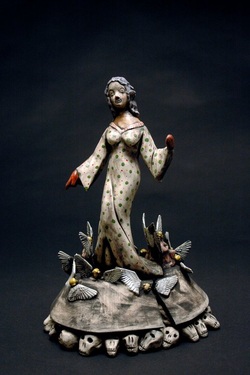 This one reads: "She felt like a joke and she was falling apart at the seams." I find this a beautiful figure. Her pose is somewhat iconic, the grace of the figure contrasts beautifully with the look of the sculls below and the chilling message. As one draws closer one notices perfectly painted clown makeup on the figure, as well as red hands. "Her sculptural based work incorporates the production of collectible figurines whose traditional genre is subverted by revealing a more truthful representation of behaviour and morality in contemporary society. An analysis of consumer culture is unveiled and dialogue is presented regarding the personal relationship one has with global events and politics." Carole Epp Bio. He prefered sterile plastic over warmth 2010 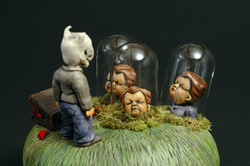 Many of her sculptures involve small glass domes, much as some higher priced ornaments. However these domes always serve a special purpose in the concept of the piece- in some cases they isolate and highlight each individual element. In the case of the above sculpture contribute to a feeling of sterility and sameness for each individual animal, also a feeling of isolation, both emotionally and in the sense of disease isolation. The side piece titled - "Never believe anyone over the age of thirty," uses glass domes over each individual head, suggestive of a mad scientist, or a Victorian display of preserved scientific curios. It went beyond role playing, 2006 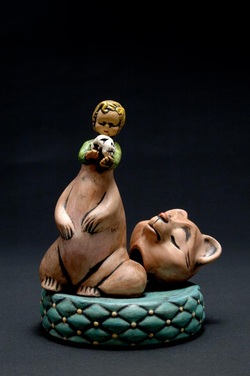 “Through bringing the overwhelming and devastating nature of war, terrorism, poverty, starvation, genetic technology, and environmental degradation back to a dialogue about the individual consumer, I felt that I could offer more positive outlooks for pro-active change in regards to the issues. I found that I could use the expectations of the medium and the collectible object as an accessible entry point into the work, allowing for a non-confrontational or disconcerting perspective on the subject matter. I wanted to both entice and repel; and inspire a desire to consume alongside an awareness of the consequences of that consumption.”- Carole Epp A reality he didn’t expect. If you wish to purchase any of Carole Epp's work, check out her Etsy page. She has both sculptural and functional ceramics available for purchase.
A few days ago I asked members of my facebook fan site to post links to their artist websites. I've decided to do a Sunday Feature every week to promote the creative work of these awesome people! Stay tuned for more! "Hexagram" -Acrylic/canvas I've been familiar with artist Martha Jablonski-Jones for quite some time now, so I was pleased when she shared her artist link on my fan page the other day. I love her urban landscapes. She seems to find the special, almost sacred qualities in ordinary scenes, the exotic in the familiar. Much of her focus is on alleyways, which she transforms into arrangements of glowing abstracted colour. The above painting- "Hexagram," reminds me of Mark Rothko- glowing squares of sunlit shapes. Her series, called "CIty" is all focused on alleys. "Inner Passage"- Acrylic/Canvas "Urban backstreets and alleys, with all their texture, wear and tear, and imprint of human habitation." - Martha Jablonski- Jones "New Morning Alley"- Acrylic/Canvas Her scenes do not contain people, but they seem to contain a presence. As urban landscapes they suggest human habitation, and even the fact that they are vertical landscapes seems to reflect human forms. These vertical shapes are almost the outline, the absence of people. Jablonski- Jones writes: "My primary artistic focus is on the contemporary urban landscape, in particular, the rich textures of things weathered and worn, run down, imprinted by time and human occupation. Although people may not appear in my paintings, they have clearly inhabited the spaces. I’m also interested in the industrial places we have created around ourselves, their formidable structures designed to serve, yet often seeming to draw us into their own service." Transparent Radiation- Acrylic/Canvas Another focus she takes is on power lines and electricity. Her series called "Electric" is about the force and power behind man made objects. These power lines and structures become infused with a glowing energy of bright lines and dynamic strokes. They take on an otherworldly quality, and almost a religious or totem significance in the landscape. It seems an interesting remark on modern condition, as much of our lives and activities rely on these totems of power. In her words they express:
"The balance of power between the man-made and the elemental; living forces of the invisible energies." Yesterday I asked members of my facebook fan site to post links to their websites. I knew I had a lot of artists on my fan site, but I was impressed by the quality of the art websites that were posted! I've decided to do a Sunday Feature every week to promote the creative work of these awesome people. The Disobedient Dollhouse PRINT-BASED INSTALLATION (LITHOGRAPHY), 2009-10. I chose to feature Jennifer Linton partly because of the domestic subject matter she employs. Given my current lifestyle and passions I find the domestic scenes fascinating, beautiful and disturbing all at once. I love the skill and care took with this particular installation- the Disobedient Dollhouse. She writes: "The idealized view of domesticity that informed my childhood dollhouse is reconfigured by my adult self as a place much more complex, even contradictory, in nature. In stark contrast to the innocuous role-playing of childhood — when one could ‘play Mommy’ — as an actual parent, the actions I take have real life consequences." 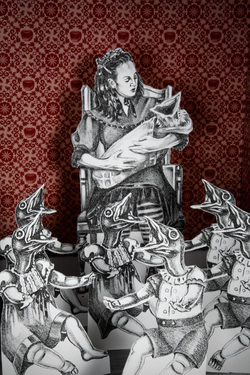 This closeup I find particularly riveting. It reminds me of late nights with a squalling infant. The baby bird suggests this endless need and insatiable quality of a new baby. I like the subversive quality of the work. I feel it's important to acknowledge as mothers that things are not perfect, not easy. The Dollhouse seems to reflect some of the difficulty of motherhood, and the conflicts between our ideals vs. the reality of the situation. Jennifer writes: "Contemporary dollhouses are decidedly not contemporary in their motifs, with the historic splendor of wealthy Victorian homes being the most frequently represented style amongst current dollhouse enthusiasts. In The Disobedient Dollhouse, I recreated the highly-detailed interiors of a Victorian-style dollhouse, self-consciously aware of the storybook view of domesticity they often conjure. While a trace of nostalgia is detectible in my project, a tension also exists in the work that simultaneously disrupts the easy consumption of these same nostalgic images. A tactic of subversion has been employed as a means of rebellion against the construction a sentimentalized view of domesticity." 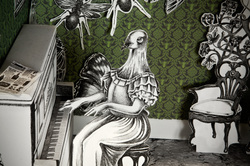 "For instance, although the conventional Victorian domestic scene of a woman playing piano has been dutifully rendered, the woman depicted is a hybrid creature with the head of a bird. A chair located in the same room as the bird-headed woman mysteriously sprouts twisted floral vines that snake up the back wall. Gigantic insects infiltrate the room and swarm across the ornate damask wallpaper like a strange, inexplicable virus. These hybrid monsters, giant insects and fantastic vegetal growths disturb the inherent sentimentality of nostalgia and propose a dark, secret world that churns just beneath the veneer of domestic perfection." Something I found really impressive was the exquisite detail of the work. The level of craftsmanship, the skill and the precision of the final piece is awe inspiring. I find work like this speaks to me as a mother- it acknowledges the intricacy of the role, the tension and the complicated aspects of motherhood. It questions tradition but also presents a very beautiful, mysterious and perplexing vision of motherhood.
|
A blog on art, roller derby and life.
Kate HansenI'm an artist and mother of two in Courtenay, BC. I've completed a project called the "Madonna and Child Project," and I'm now working on a series of roller derby inspired drawings. In my spare time I play roller derby with the Brick House Betties. Archives
November 2012
Categories
All
|
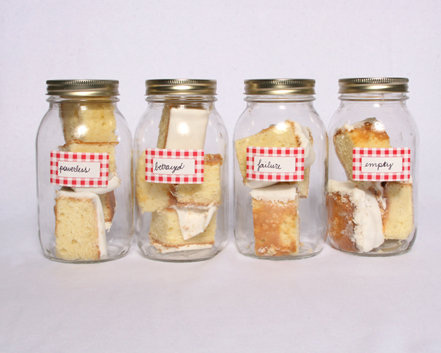
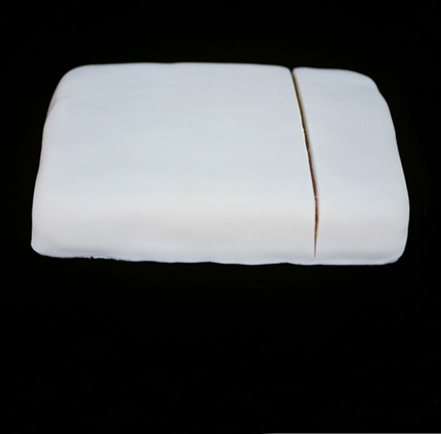
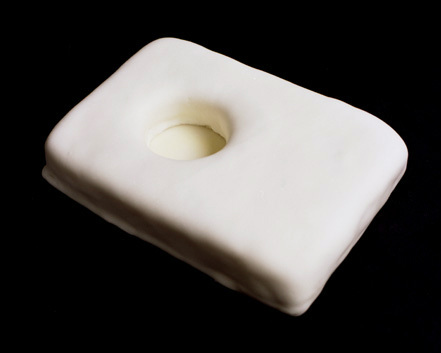
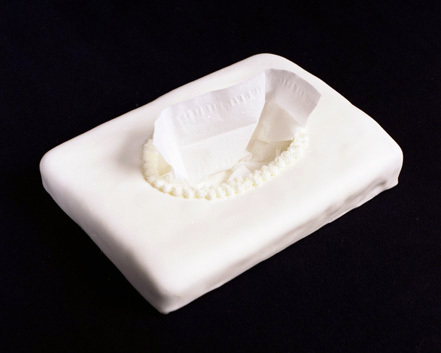
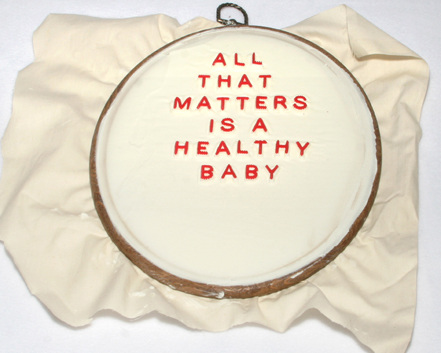
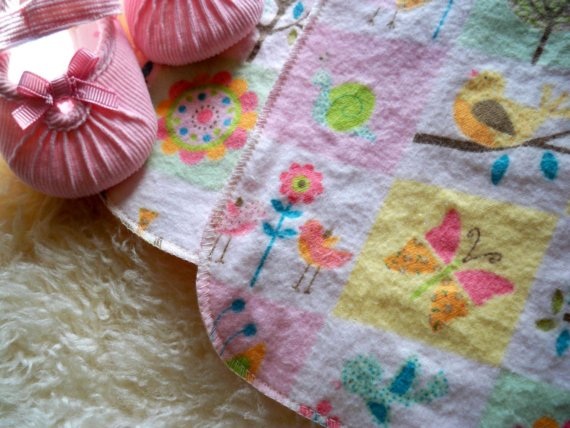
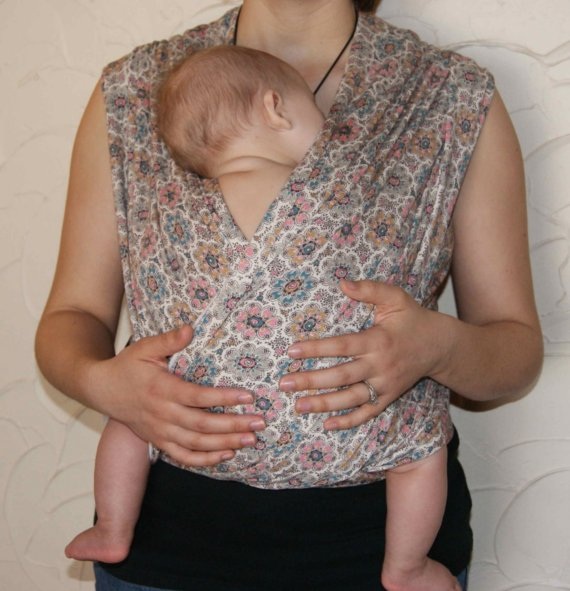
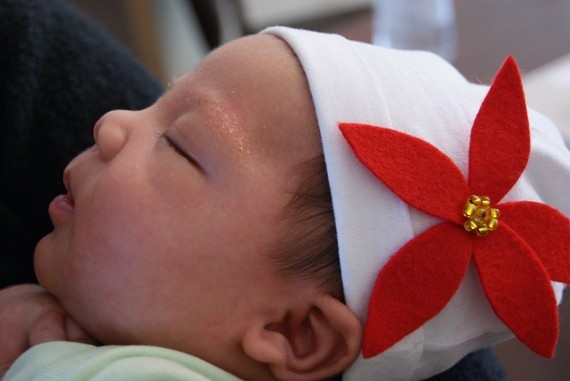
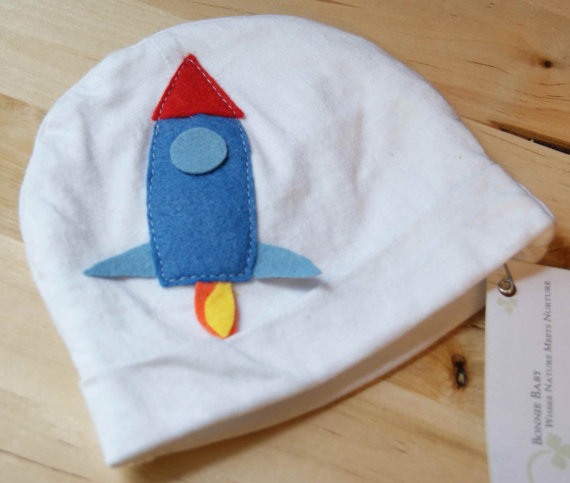
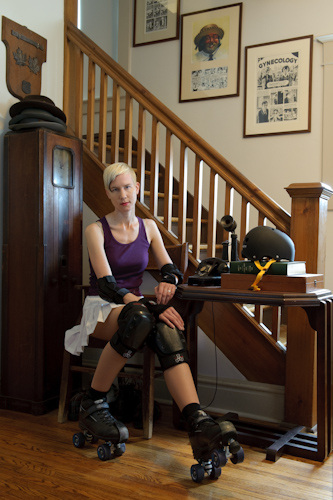
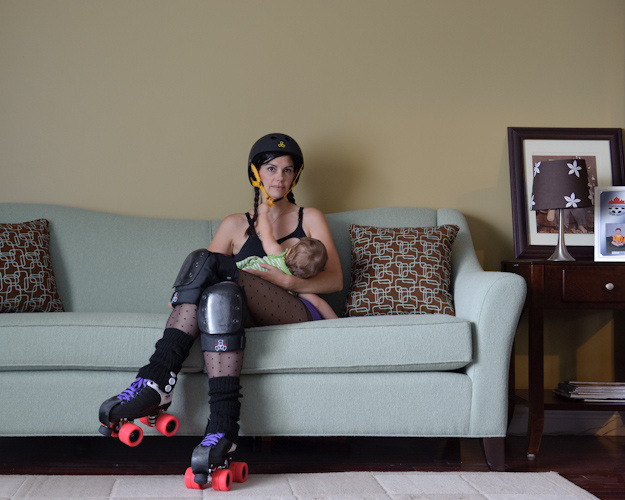
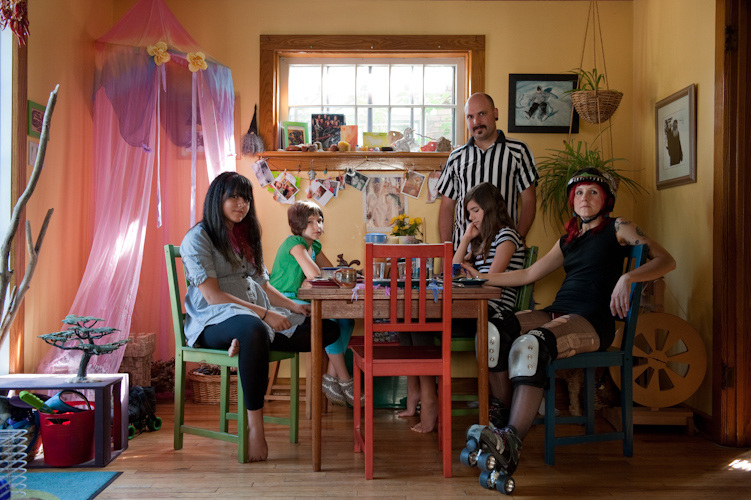
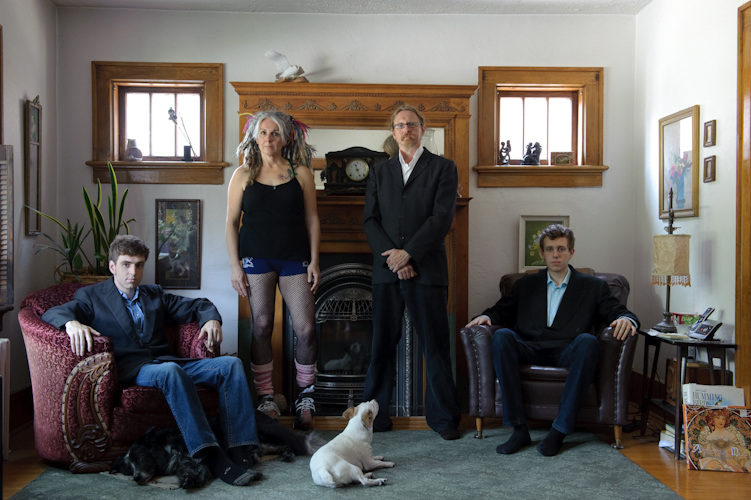
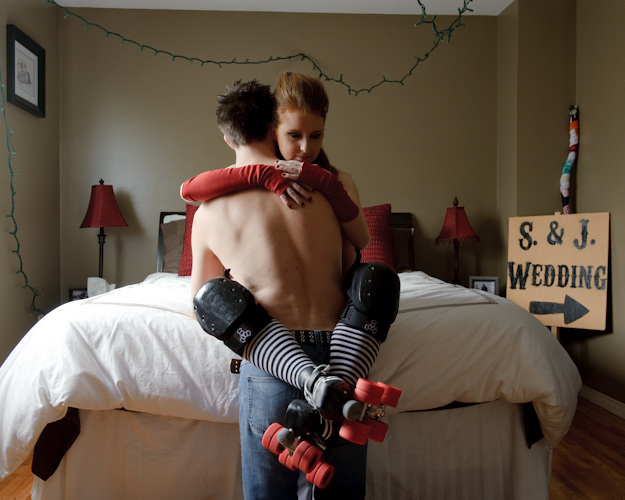
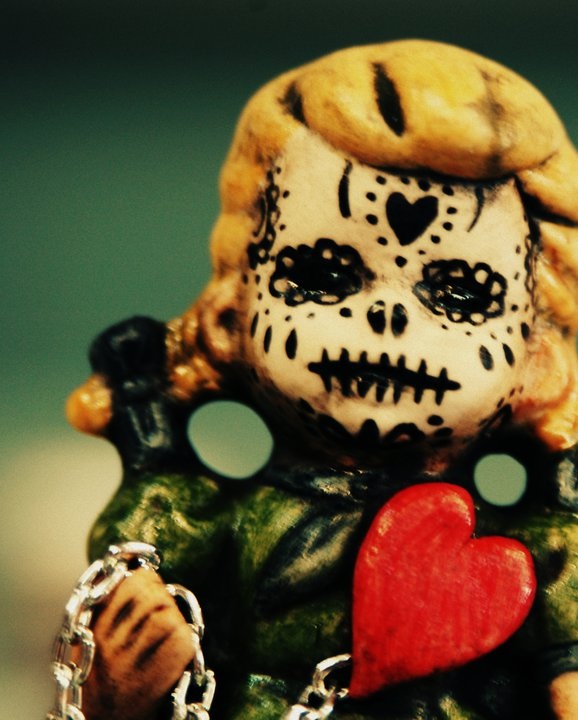
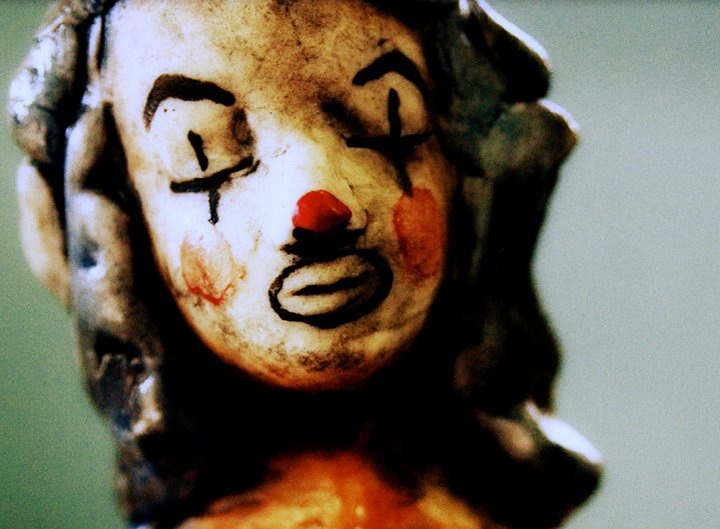
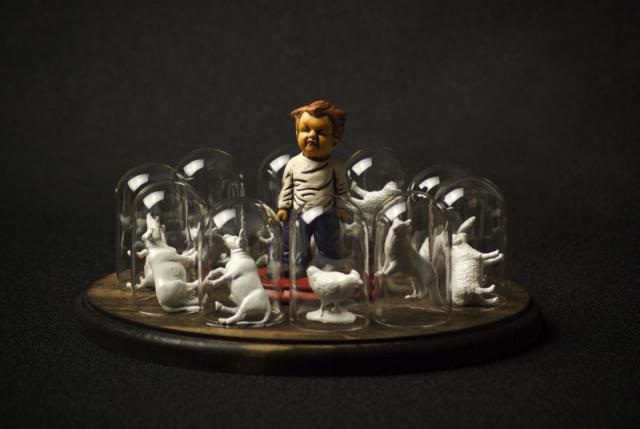
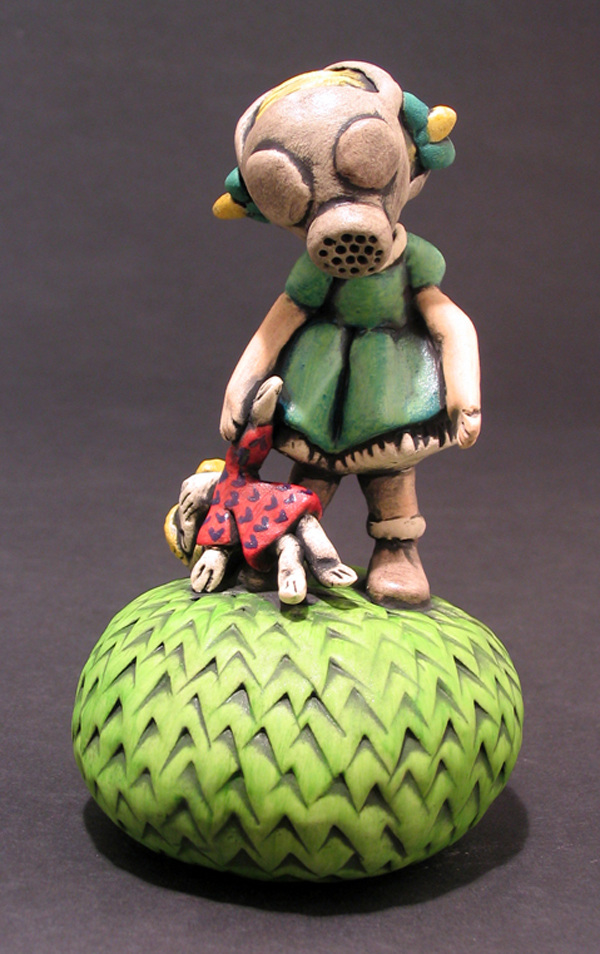
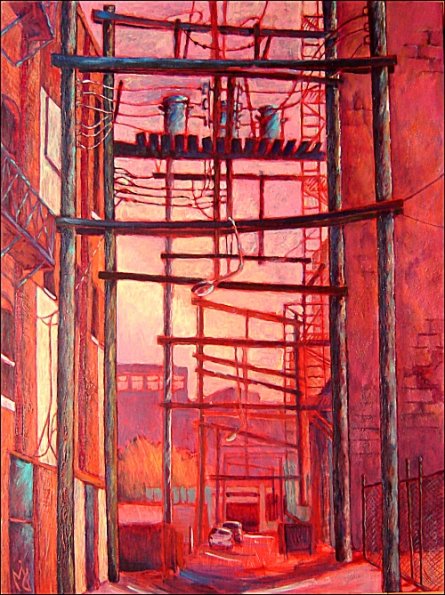
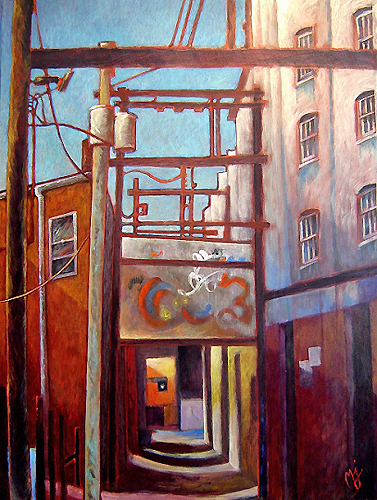
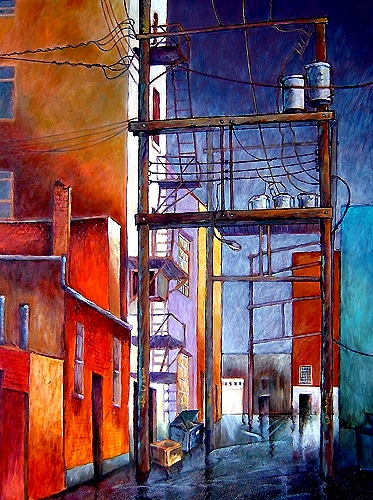
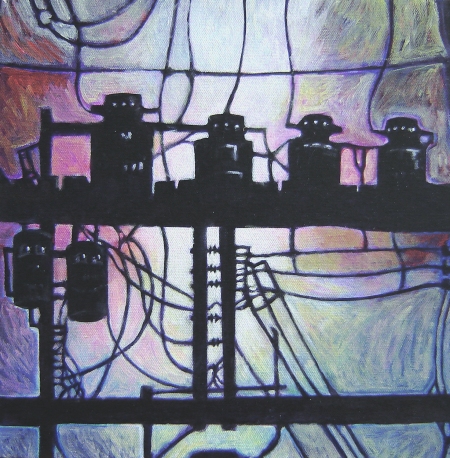
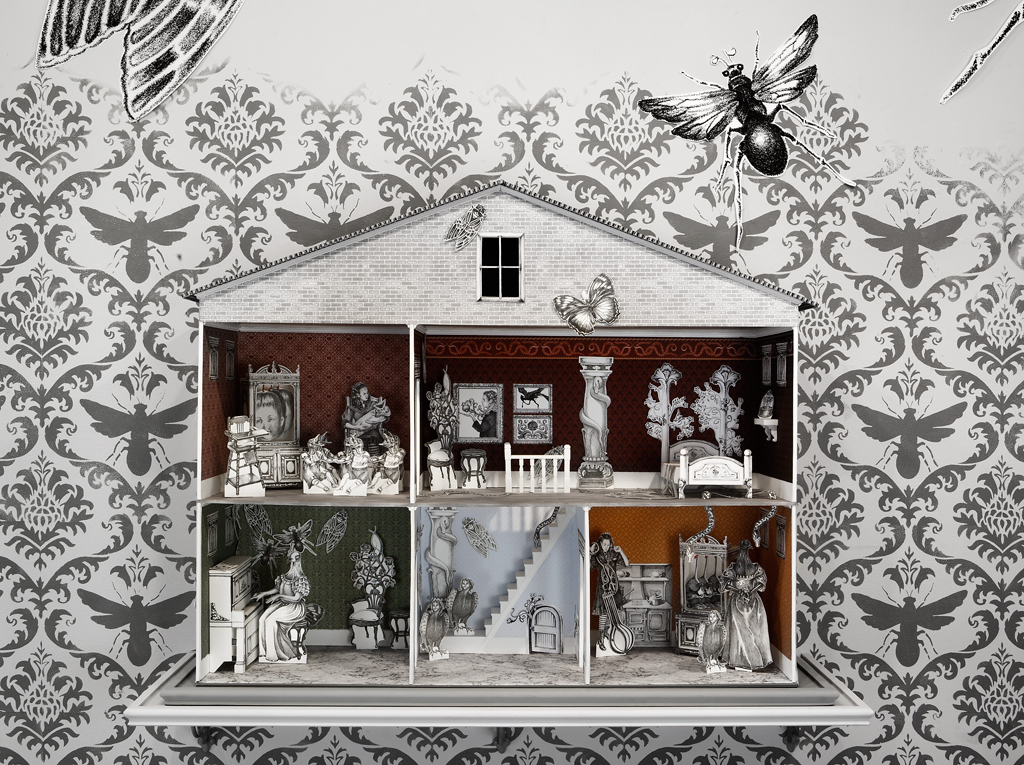
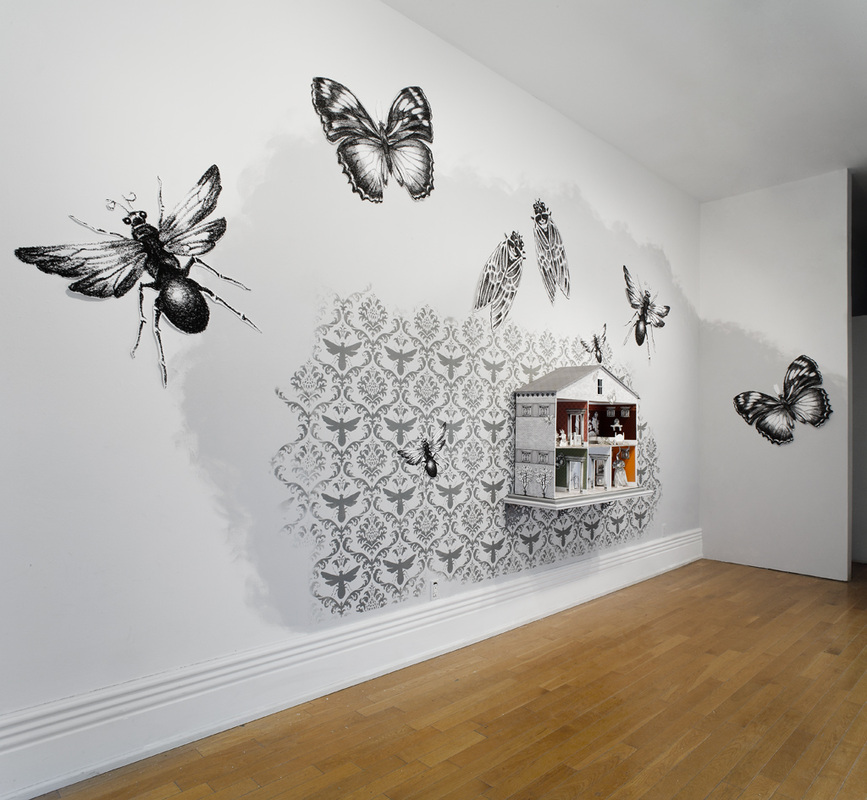
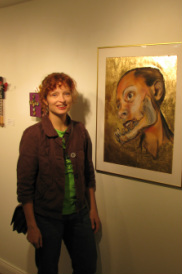

 RSS Feed
RSS Feed
